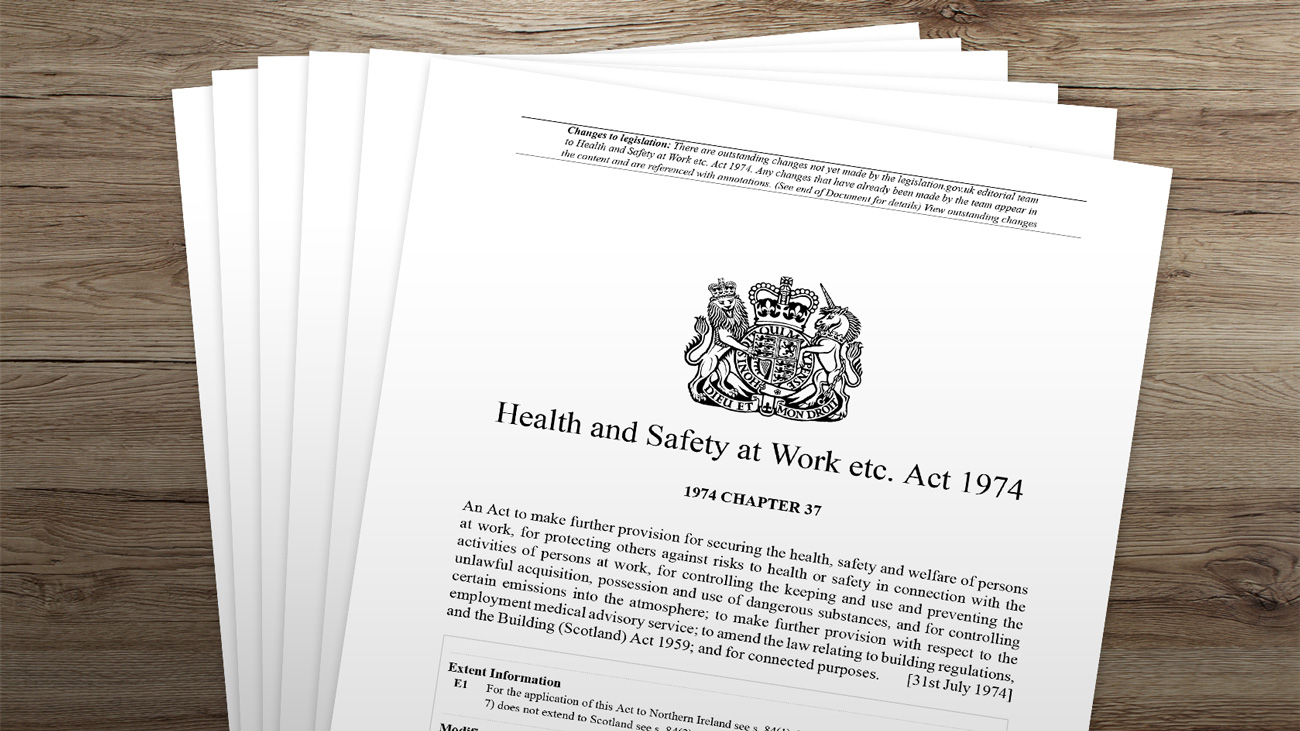
Briefing: The Robens Report: 50 years since its publication
This month marks 50 years since the publication of the Robens Report, a seminal undertaking that transformed the way health and safety was addressed in Britain’s workplaces, and which led to the introduction of the Health and Safety at Work etc. Act 1974. In this briefing, we look at some of the ways the Report is being celebrated.
History of Occupational Safety and Health
The Robens report, published in 1972, led to a fundamental change in the approach to the management and regulation of work-related safety and health issues in the UK. It is probably fair to say this is a widely shared view – both by those who would applaud and acclaim the changes as being positively transformational as well as those who have criticised the “Robens philosophy” as being naïve and misconceived.
The report led to the Health and Safety at Work etc. Act 1974 (HSWA) and the creation of the Health and Safety Commission (HSC) in 1974 and the Health and Safety Executive (HSE) in 1975. Therefore, there are three related 50th anniversaries in 2022, 2024 and 2025, all leading to the development of a health and safety at work “system” in Great Britain.
Fiftieth anniversaries can provide opportunities for reflection on developments and lessons learnt. These can be interesting but become of more value if used to consider their relevance and learning in consideration of contemporary issues and challenges. The fact that there are three interlinked anniversaries provides space and an opportunity to for such reflection. It is likely that the 50th anniversaries of the HSWA and HSC/E in 2024/25 will prompt the most interest and scrutiny. However, we believe that the reflections need to start with a clear understanding of what the Robens report actually said and is informed by the evidence of how outcomes, in terms of occupational accidents and ill health, have improved since 1974.
To stimulate that reflection and discussion, David Ashton, David Eves, Kevin Myers, and David Snowball, all formerly of the HSE, have prepared and commissioned three papers:
- Why Robens? sets out the genesis of the Robens report – and what it said. It is inevitable that, with the passage of time since the report was published, some recollections of the report may have become blurred. Indeed many people currently working within the “system” may be unaware of its genesis.
- Unravelling the Maze seeks to answer an obvious question that emerges from reading Why Robens? as to whether and how the recommendations in the Robens report were implemented – and, if not, why?
- A third paper, What difference did Robens make? Analysing health and safety data across the decades seeks to look at the changes in health and safety outcomes over the last 50 years to inform any discussions about the impact of the report.
IOSH
The 1972 Robens report and the organisations it gave birth to transformed health and safety in Britain and has shown remarkable adaptability even half a century later, says IOSH. July 2022 marks 50 years since the Robens committee, led by Lord Alfred Robens, published its landmark report, transforming Britain’s regulatory OSH approach and creating a ripple effect felt as far away as Singapore and Australia.
The report, Safety and health at work: report of the committee 1970-1972, outlined a series of recommendations aimed at overhauling the nation’s fragmented and overly prescriptive OSH regime. Accidents and fatalities at work by 1970 were unacceptably high and the UK regulatory system wasn’t working. One of several catalysts for change was the Aberfan disaster on 21 October 1966 when 144 people – 116 of them children – were killed by a tip of coal waste sliding onto their South Wales village.
The Tribunal that was later held into the disaster concluded: ‘Blame for the disaster rests upon the National Coal Board’ – the same coal board that Lord Robens was chairman of when the disaster occurred.
While his conduct at the time of the disaster and his ultimate appointment to the committee has drawn criticism over the years, the committee’s work was a success, underpinning the Health and Safety at Work etc. Act 1974 (HSWA). It was the committee’s recommendation to change the nation’s fragmented and overly prescriptive OSH regime with a more flexible system that emphasised what Robens termed ‘self-regulation’. The new regime also extended OSH protections to a greater number of workers and, for the first time, the public. The committee’s recommendations were substantively enacted in the HSWA, which received royal assent in July 1974, exactly two years after the Robens report was published.
IOSH has produced a short video on the Robens Report, here.
HSE
Lord Alfred Robens was a prominent post-war industrialist. In 1969, three years after the Aberfan disaster, Robens was selected to chair a committee on workplace health and safety. The Robens Report of July 1972 led to the Health and Safety at Work etc. Act 1974, paving the way for the creation of Health and Safety Executive (HSE) the following year. Fifty years ago this week the report was tabled and debated. Philip White, HSE’s director of regulation, believes Robens has not only stood the test of time, but remains relevant to HSE in a crucial new phase.
Lord Robens set to work with the aim of finding a way to reduce Britain’s work-related deaths, injuries and ill health. At that time there were around 1,000 work related deaths each year, half a million suffered injuries, and 23 million working days were lost annually through industrial injury and disease. Fifty years on, few would argue his report didn’t meet this aim.
We should all reflect on this achievement with pride. I believe that Lord Robens’ report, and the Health and Safety at Work etc. Act 1974, is a great British achievement. It demonstrates how government can work with the consent and agreement of those in positions of responsibility across society. It’s one of very few pieces of post-war legislation that has stood the test of time – and delivered what it set out to achieve.
Moreover, the spirit of Robens has carried through in several key pieces of legislation that HSE helped introduce to keep pace with changing world or work as well as ensuring the principle of those who create risk must take responsibility for controlling it: the Control of Major Accidents Hazards Regulations (1983), the Control of Substances Hazardous to Health (1988), the Construction Design & Management Regulations (1994) and the Gas Safety Management Regulations (1996).
But we don’t just believe in regulating by legislating. Our strategy, Protecting People and Places makes clear our commitment to finding new ways to address the most significant risks. As well as an expanding remit that now includes the Building Safety Regulator, which will enable people to feel safe in their homes, and heightened responsibility to the wider environment in our role in chemicals regulations, the economy itself and the way people work is also transforming. The drive to Net Zero will create new challenges, and the revolution in online retail means the model of regulating the retail supply chain may need to be reviewed.
We are under no illusion that some of these challenges are more abstract than those facing the readers of the Robens Report in the 1970s.
Look carefully through the report, and the transcripts of the subsequent parliamentary debates it generated, and you’ll find reference to two other issues that needed to be considered – work-related stress and apathy towards health and safety.
Both challenges persist in Britain’s workplaces today.
In 2020/21, 822,000 workers reported experiencing work-related stress, depression or anxiety – but it’s fair to say that the true figure is greater if you include those suffering in silence.
The COVID-19 pandemic created a renewed focus on health and safety for all of us. While many have positively sought to capitalise and harness this, I am troubled by even casual references creeping back into public conversations that associate health and safety with barriers to fun or innovation, overlooking the true mission of protecting people and places – and getting every worker home safely at the end of their day. If we need to challenge examples of this, we will do so without hesitation, but remembering Robens’ principle for controls to be practical and proportionate to the risk.
Robens still matters. And will still matter over the next 50 years.







